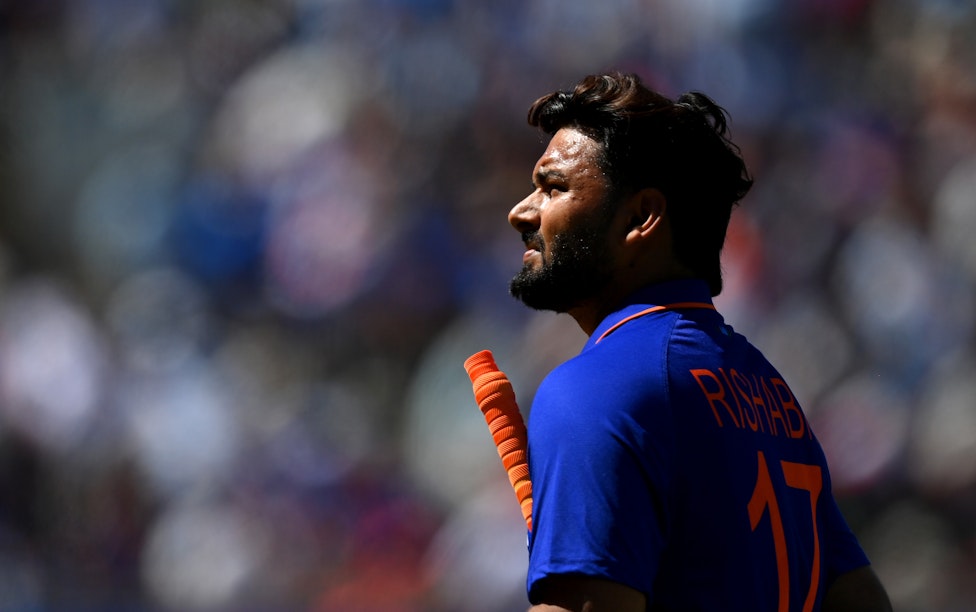 OPINION
OPINIONThe Indian management caught everyone off guard at the start of the second T20I against England at Edgbaston. Everyone expected Virat Kohli to walk out with skipper Rohit Sharma to open the innings after India opted to bat first. But surprise surprise, it was Rishabh Pant.
It was a progressive move. India showcased a carefree approach in the first T20I, focused on optimizing their resources rather than holding on to the wickets. Pant’s promotion aligned with that theory. It was the first time he opened in T20 Internationals but had donned the role multiple times in domestic T20s - averaging 38.2 at a strike-rate of 166.1 in 16 innings. Both metrics, the average and the strike-rate, are his highest among all batting positions.
The uncertainty around KL Rahul has opened up a spot at the top of the order. Ishan Kishan provided par results in his long run as India’s T20I opener but he won’t be part of the XI when the full-strength side is available. India have had multiple opening options in the past but few have left fans and experts as excited as Pant did. He scored 26 off 15 and 1 off five balls in the two outings against England as an opener. But it looks like a move that holds merit to be explored further. And like every other thing in the world, this tactic also comes with its own set of pros and cons.
Freeing up the beast
A big reason behind Pant’s success in Test cricket is the vacant area in the outfield. He is exquisite in clearing the in-field, be it finding the gap or hitting it over the fielders. In Test cricket, he sets his own pace. These liberties have evaded him as a middle-order batter in the shortest format of the game.
However, as a T20 opener, Pant can drive the game at his own pace with only two fielders outside the ring in the powerplay. A Test match-like habitat to begin his innings would help him flourish more instead of the hardships of the middle-order. On skills, he is too good a white-ball player not to be used at his optimal position. Pant also has a tight defensive game to keep the good deliveries out.
In addition, he will establish a right-left hand combination and presumably, a more attacking opening pair at the top than Rohit-Kohli.
No left-handers in the middle?
Pant’s promotions will deprive India of a quality left-hander at number four. A left-hander in the middle-order has become a necessity in T20 cricket to negotiate the match-up of leg-spin and left-arm orthodox spin. Barring Pant, no other left-hander has relished a long run in the middle-order before. Hence, the opening slot might be beneficial for Pant individually but him batting at four is equally valuable for India’s fortunes.
There is always the option of batting Ravindra Jadeja at four but the southpaw’s mediocre record against spin becomes an obstacle. In T20s since 2021, Jadeja has a strike rate of only 75.6 facing spin. Against pacers, the strike rate soars up 163, owing to his caliber of clobbering the pacers at the death overs. Thus, a promotion for Jadeja might not be the best solution to counter Pant’s absence in the middle order.
The next best option is to cover that void with right-handers who can attack spin. On that note, the likes of Suryakumar Yadav (average 33.4, strike-rate 149.6 against spin since 2021), Shreyas Iyer (36.7, 135.4), Deepak Hooda (59.5, 146.9) and Sanju Samson (38.7, 139.3) become the number four probables.
In this lot, Samson and Hooda haven’t gained enough experience at the international level. Meanwhile, Iyer’s weakness against the short ball makes him an easy target against seam bowling. Surya, having done well at all positions in white-ball cricket, therefore becomes an apparent number four candidate.
It can force India to choose between Rahul and Kohli, or worse
For long, India have functioned with their big three - Rohit, Rahul, and Kohli - batting in the top three. Pant’s entry will disrupt the modus operandi. It might force the team management to pick one between Rahul and Kohli for the number three spot and drop the other.
Firstly, India will have to take a call on Rahul’s fitness. The right-hander, undergoing treatment for a recurring groin injury, won’t be available for selection until a month prior to the T20 World Cup. Does he get into the side based on reputation? If yes, he will be competing with Kohli for the number three spot. Slipping Kohli down the order isn’t an option considering his ordinary numbers against spin (average 27.8, strike-rate 99.1). Hence, it could also become a shootout between Rahul and Kohli in the playing XI.
If the management opts for both with Rahul at four, it would force Dinesh Karthik out of the XI since both Jadeja and Hardik Pandya are indispensable to the team owing to their all-round credentials. It would also mean multiple players batting out of their usual position.
With the T20 World Cup less than 100 days away, Pant’s promotion as an opener will demand too many changes in the existing setup. If Rahul is unavailable, Pant moving to top of the order could be straightforward, ultimately displacing Ishan Kishan off his back-up opener’s role.
The promotion against England is a decision based on an eye on the future - when either Kohli or Rohit retires. The upcoming five-match T20I series in the Caribbean will shed more light on what the team management is thinking.
*All stats are from 2021 onwards unless stated otherwise